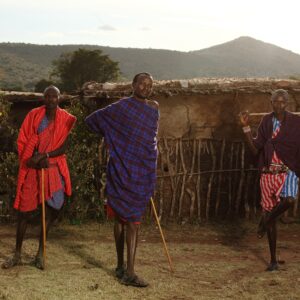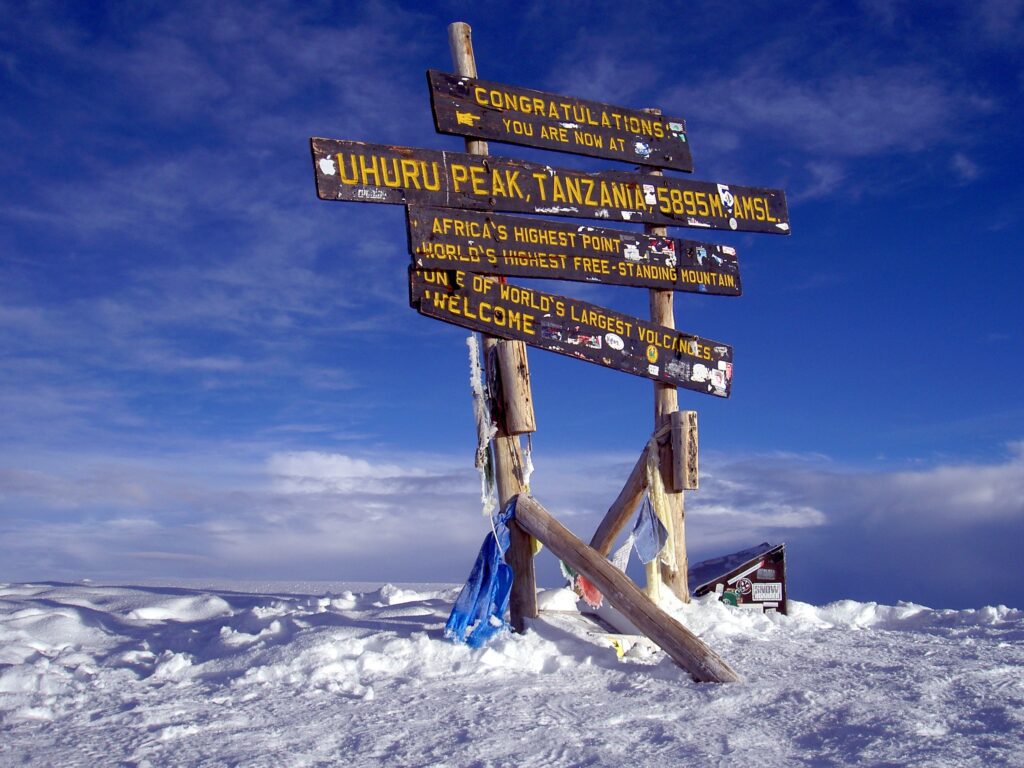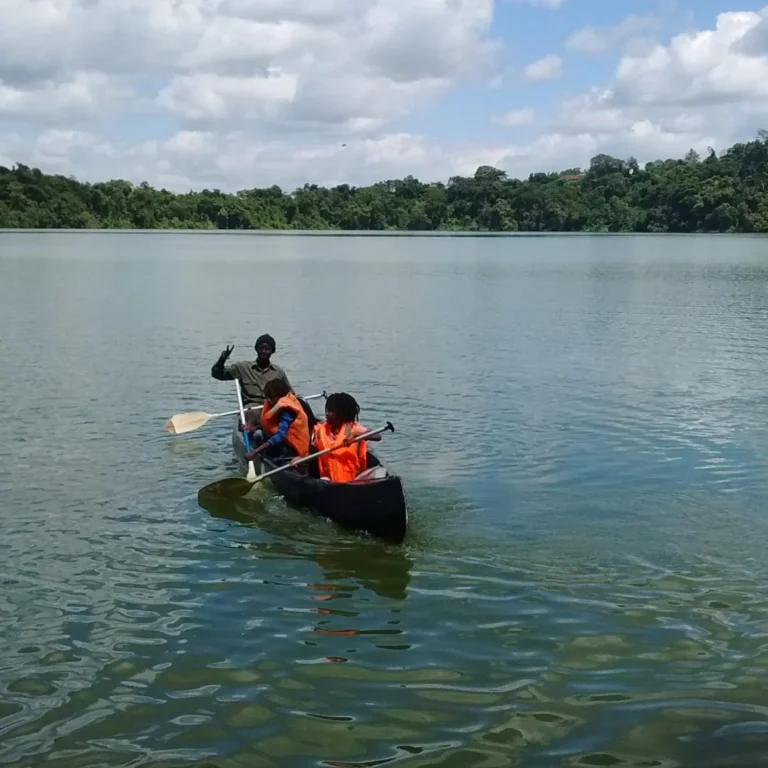Mount Mauna Kea is the world’s tallest mountain from its underwater base, Mount Everest is the world’s highest peak above sea level, and Mount Kilimanjaro is Africa’s highest peak and the world’s highest freestanding mountain. While Everest is the most challenging and technically demanding, Kilimanjaro is an accessible hike requiring no technical skills, and Mauna Kea offers a more accessible experience with a visitor center and trails. Throughout history, mountains have stood as awe-inspiring symbols of nature’s majesty and human determination. Among the world’s most iconic peaks, Mauna Kea, Everest, and Kilimanjaro each offer unique characteristics, challenges, and experiences. In this comparative analysis, we explore what makes these three mountains extraordinary, diving deep into their geology, cultural significance, and climbing opportunities.
Mauna Kea: The World’s Tallest Mountain (Base to Summit)
Mauna Kea is the world’s tallest mountain when measured from its base on the ocean floor to its summit, standing at a total height of approximately 10,210 meters (33,500 feet). While Mount Everest holds the record for the highest elevation above sea level, a significant portion of Mauna Kea’s height is submerged underwater, making it taller in total vertical distance.
Geographical and Geological Marvel
Mauna Kea, located on the Big Island of Hawaii, is technically the tallest mountain on Earth when measured from its base on the ocean floor to its summit. It rises over 33,500 feet (10,210 meters), dwarfing Mount Everest by this measure. However, its above-sea-level height is 13,803 feet (4,207 meters). This dormant volcano is part of the Hawaiian-Emperor seamount chain and has been shaped by millions of years of volcanic activity.
Cultural and Astronomical Significance
In Hawaiian culture, Mauna Kea is sacred, considered the realm of the gods and a spiritual bridge between heaven and earth. Modern astronomy also finds a home here; its summit hosts world-class observatories due to its minimal light pollution and stable atmospheric conditions.
Climbing Mauna Kea
Reaching the summit of Mauna Kea is a unique experience. Unlike Everest or Kilimanjaro, no technical climbing is required. However, the combination of high altitude and steep roads makes it a physically demanding trek. Most climbers start at the Visitor Information Station, hiking approximately 6 miles (10 kilometers) to the peak.
Mount Everest: The Roof of the World
“Mount Everest: The Roof of the World” is a descriptive title for Earth’s highest mountain, a title earned due to its immense elevation above sea level, which reaches 8,848.86 meters (29,031 feet). Located in the Himalayas on the China-Nepal border, the mountain’s designation as the “Roof of the World” also reflects its geological history, having formed from the uplift of ancient ocean floor by tectonic plate collisions.
The Pinnacle of Altitude
Mount Everest, situated in the Himalayas on the border of Nepal and Tibet, is the highest mountain above sea level, standing at 29,032 feet (8,849 meters). Formed by the collision of the Indian and Eurasian tectonic plates, Everest’s prominence has made it a focal point for mountaineers and adventurers worldwide.
A Sacred Landmark
Everest is known as Sagarmatha in Nepal, meaning “Head of the Sky,” and Chomolungma in Tibetan, meaning “Mother Goddess of the World.” Its cultural reverence is matched by its allure as the ultimate mountaineering challenge.
The Climbing Experience
Scaling Everest demands months of preparation, permits, acclimatization, and specialized equipment. The two most popular routes—the South Col in Nepal and the North Ridge in Tibet—pose life-threatening challenges, including crevasses, avalanches, and the thin air of the “death zone” above 26,000 feet (8,000 meters). Despite these risks, more than 6,000 climbers have reached the summit.
Mount Kilimanjaro: Africa’s Majestic Freestanding Mountain
Mount Kilimanjaro is Africa’s highest mountain, a dormant volcano located in Tanzania, and the world’s tallest free-standing mountain, rising 5,895 meters (19,341 feet) above sea level. Its unique, isolated nature sets it apart from mountain ranges and makes it a popular destination for trekkers. The mountain is known for its iconic snow-capped peaks and diverse ecosystems, though its famous glaciers are rapidly shrinking due to climate change.
A Volcanic Wonder
Kilimanjaro, located in Tanzania, is the tallest freestanding mountain in the world, soaring to 19,341 feet (5,895 meters) above sea level. Unlike Everest, which is part of a vast mountain range, Kilimanjaro stands alone, making it an imposing natural landmark. Composed of three volcanic cones—Kibo, Mawenzi, and Shira—only Kibo remains dormant.
A Symbol of Beauty and Challenge
Known as the “Roof of Africa,” Kilimanjaro embodies both beauty and accessibility. Its snow-capped summit contrasts strikingly with the surrounding savanna, and its ecosystems range from rainforests to alpine deserts. Kilimanjaro holds cultural and ecological importance, attracting climbers and conservationists alike.
The Kilimanjaro Climb: Climbing Kilimanjaro is considered a non-technical ascent, making it achievable for individuals with strong physical fitness. The most popular routes, including the Machame, Marangu, and Lemosho trails, take 5 to 9 days. However, altitude sickness remains a significant challenge as climbers ascend rapidly.
Key Comparisons: Mount Mauna Kea vs. Everest vs. Kilimanjaro
| Feature | Mauna Kea | Everest | Kilimanjaro |
|---|---|---|---|
| Height | 33,500 ft (base to summit) | 29,032 ft (above sea level) | 19,341 ft (above sea level) |
| Geological Type | Dormant volcano | Fold mountain | Stratovolcano |
| Climbing Difficulty | Moderate | Extreme | Moderate |
| Cultural Significance | Sacred in Hawaiian culture | Sacred in Nepalese/Tibetan culture | Revered in African traditions |
| Climbing Season | Year-round | March-May, September-November | June-October, December-March |
Mermaid Diagram: Mount Mauna Kea vs. Everest vs. Kilimanjaro Altitude Comparison
A: Base of Mauna Kea –> 33,500 ft, B: Summit of Mauna Kea
C: Base of Mount Everest –> 29,032 ft, D: Summit of Everest
E: Base of Kilimanjaro –>19,341 ft, F: Summit of Kilimanjaro
What Sets Each Mountain Apart?
Unique Characteristics: Mauna Kea offers an unparalleled blend of geological significance and astronomical potential, ideal for adventurers and stargazers alike.
Everest represents the ultimate test of human endurance, appealing to those seeking extreme challenges.
Kilimanjaro provides an accessible yet rewarding journey through diverse ecosystems, making it a favorite for trekkers and nature enthusiasts.
Climbing Suitability
Each mountain caters to different skill levels:
Beginner to Intermediate: Kilimanjaro
Intermediate to Advanced: Mauna Kea
Advanced Only: Everest
Mauna Kea: The Tallest Mountain in the World (Underwater)
Mauna Kea, located on Hawaii’s Big Island, is the tallest mountain in the world when measured from its base beneath the Pacific Ocean. Rising over 33,500 feet (10,210 meters) from the seafloor to its summit, it surpasses Mount Everest in total height. Above sea level, it reaches 13,803 feet (4,207 meters). This dormant volcano is a sacred site in Hawaiian culture and a premier location for astronomical research due to its clear skies and minimal light pollution, hosting some of the world’s most advanced observatories.
Different between Mount Mauna Kea vs Everest vs Kilimanjaro
Mount Mauna Kea (Hawaii), Everest (Nepal), and Kilimanjaro (Tanzania) differ vastly. Mauna Kea is the tallest from base to summit (10,210m) but submerged. Everest, Earth’s highest peak (8,849m), dominates mountaineering with harsh conditions. Kilimanjaro (5,895m) is Africa’s tallest, a free-standing volcano with diverse ecosystems. Mauna Kea is famous for astronomy, Everest for its extreme altitude, and Kilimanjaro for its accessibility and scenic routes. Each offers a unique experience: science, adventure, or natural beauty.
Charactaristic/ feauture of Mount Mauna Kea vs Everest vs Kilimanjaro
The Mount Mauna Kea: The tallest mountain on Earth from base to summit, Mauna Kea rises over 33,500 feet from its underwater base, featuring snow-capped peaks and world-class observatories on its summit.
Mount Everest: Earth’s highest peak above sea level at 29,032 feet, Everest boasts rugged terrains, extreme weather, and unparalleled challenges for climbers in the Himalayas.
Mount Kilimanjaro: Africa’s tallest mountain at 19,341 feet, Kilimanjaro is famed for its freestanding structure, diverse ecosystems, and scenic routes to Uhuru Peak.
Fun Facts: Mauna Kea vs. Everest vs. Kilimanjaro
Mauna Kea (Hawaii) is the tallest mountain from base to summit, rising over 10,200 meters when measured from the ocean floor. Everest (Nepal/Tibet) is the highest above sea level at 8,849 meters, attracting daring climbers. Kilimanjaro (Tanzania) is a freestanding volcanic giant, rising 5,895 meters with breathtaking biodiversity. Each mountain holds unique records: Mauna Kea’s underwater base, Everest’s legendary height, and Kilimanjaro’s stunning ecosystems and cultural significance make them world wonders.
Which is better Mount Mauna Kea vs Everest vs Kilimanjaro
Mount Mauna Kea is the tallest mountain from base to summit, stretching 33,500 feet from the ocean floor, offering unique stargazing and diverse ecosystems. The Mount Everest, Earth’s highest peak above sea level at 29,032 feet, challenges elite climbers with extreme altitude and weather. Your Mount Kilimanjaro, at 19,341 feet, is the tallest free-standing mountain, ideal for trekkers seeking scenic routes through varied climates. Each is unmatched: Mauna Kea for geology, Everest for adventure, and Kilimanjaro for accessibility and beauty.
Which is harder Mount Mauna Kea vs Everest vs Kilimanjaro
Mount Everest is the hardest due to extreme altitude (8,849m), severe cold, and technical climbing. The Mauna Kea, while taller from base to summit (10,210m), is easier due to gradual trails and lower elevation at the peak (4,207m). Kilimanjaro (5,895m) is challenging but non-technical, requiring stamina for high-altitude trekking. Everest demands advanced mountaineering skills, Kilimanjaro tests endurance, and Mauna Kea, though accessible, poses risks like altitude sickness due to rapid ascent. Everest remains the ultimate test.
Fun Facts for Kids about Mount Mauna Kea vs Everest vs Kilimanjaro
Mount Mauna Kea in Hawaii is the tallest mountain from base to summit at 10,210 meters, mostly underwater! The Mount Everest in Nepal is Earth’s highest peak above sea level at 8,848.86 meters, ideal for extreme adventurers. A Mount Kilimanjaro in Tanzania is the tallest free-standing mountain at 5,895 meters, known for its diverse ecosystems. Mauna Kea’s telescopes, Everest’s snow-capped peaks, and Kilimanjaro’s tropical-to-arctic zones make each unique and fascinating for kids to learn about!
Conclusion: Comparing Mauna Kea Everest and Kilimanjaro
Mauna Kea, Everest, and Kilimanjaro, though vastly different in height, geology, and climbing challenges, each hold an enduring allure comparing Mauna Kea Everest and Kilimanjaro. Whether you’re drawn to Mauna Kea’s cosmic observatories, Everest’s towering grandeur, or Kilimanjaro’s vibrant ecosystems, these peaks inspire awe and exploration comparing Mauna Kea Everest and Kilimanjaro. Each mountain has its story, offering something unique to those who dare to ascend its heights.








